Premium Only Content
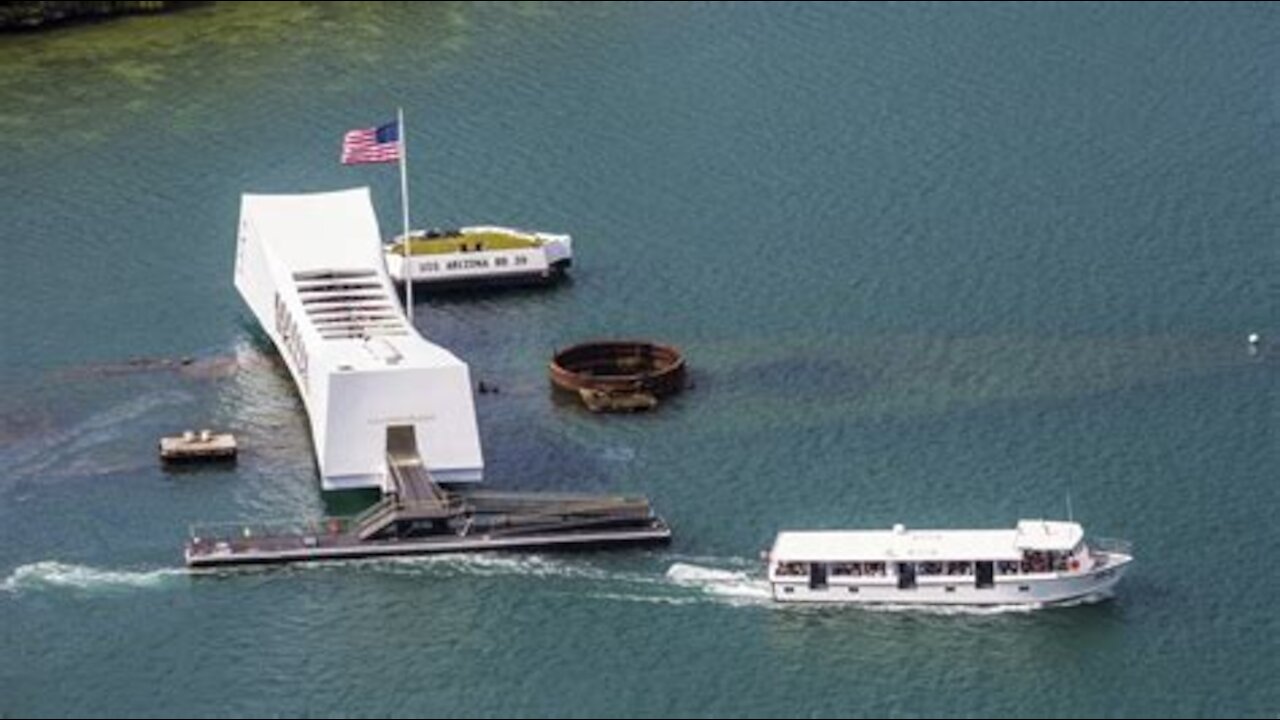
The Day.....Infamy
80 years ago this day, at approximately 06:10 hours local time Japan's Imperial Navy set on a Mission.......
The U.S. naval base at Pearl Harbor on Oahu Island, Hawaii, was attacked by the Japanese on December 7, 1941.
President Franklin D. Roosevelt speaking to Congress on December 8, 1941 said “Yesterday, December 7, 1941—a date which will live in infamy—the United States of America was suddenly and deliberately attacked by naval and air forces of the Empire of Japan.”
TIMELINE of the attack on Pearl Harbor on December 7, 1941
At 6:10 AM, Minesweeper USS Condor sights a periscope
At 6:10 AM, the first wave of planes took off from Japanese aircraft carriers, approximately 200 miles north of Oahu.
At 6:45 AM, the first shots fired by the USS Ward at a Japanese submarine. These were the first shots fired by the United States in World War II.
At 6:53 AM, USS Ward radios Navy headquarters but the decoding process delays the message.
At 7:02 AM, A radar station on Oahu spots unidentified aircraft heading toward Hawaii.
At 7:20 AM, Army lieutenant disregards this radar report because he believes it is a flight of U.S. B-17 bombers coming from California.
At 7:40 AM, the first wave of Japanese aircraft reaches Oahu.
At 7:49 AM, the Japanese aerial commander orders the attack on Pearl Harbor.
At 7:55 AM, the Coordinated attack on Pearl Harbor begins.
At 8:10 AM, the USS Arizona explodes.
At 8:17 AM, the Destroyer USS Helm fires at and sinks Japanese submarine at entrance to harbor.
At 8:54 AM, the second wave of attack begins.
At 9:30 AM, the USS Shaw explodes in dry dock.
At 10:00 AM, Japanese planes head back to carriers and ultimately back to Japan.
JAPAN’S AERIAL ATTACKING FORCE
Japan’s aerial attacking force at Pearl Harbor involved 353 planes, 29 of those planes were lost in the attack. Japan’s fleet consisting of some 67 ships was located approximately 200 miles north of Oahu.
Only one ship that participated in the attack on Pearl Harbor survived through the end of World War II.
MAP DESCRIPTION:
Locator map of Oahu as part of the Hawaii islands
Map of Oahu showing the directions of the first and second waves of attack by the Japanese towards Pearl Harbor.
Map of Pearl Harbor with Ford Island in the middle showing where all of the United States ships were docked and the directions of the flight paths of Japan’s attack squadrons
Map also shows which ships were damaged:
U.S. Ships that were a total loss: Arizona, Oklahoma, Utah
U.S. Ships damaged and repaired: Curtiss, Raleigh, Nevada, Vestal, West Virginia, Tennessee, Maryland, California, Oglala, Helena, Shaw, Cassin, Downes, Pennsylvania, Honolulu
Battleships USS Arizona and USS Oklahoma along with former battleship, now target ship USS Utah were a total loss and never returned to service. USS West Virginia was the only ship attacked at Pearl Harbor present during Japan’s formal surrender on September 2, 1945.
THE AFTERMATH
A total of 2,404 United States military and civilians were killed, 1,177 were killed aboard the USS Arizona and 68 civilians were killed. A total of 64 Japanese military were killed with one taken prisoner
15 United States Navy personnel received the Medal of Honor and 51 received the Navy Cross. The Pearl Harbor Commemorative Medal was later given to all military veterans of the attack.
Sources: Naval History and Heritage Command, National WWII Museum
BACKGROUND
The relationship between Japan and the United States had soured in the years leading up to Pearl Harbor. This began with the Japanese invasion of Manchuria in 1931, an expansion throughout the Chinese mainland that led to the Second Sino-Japanese war between China and Japan in 1937. Japan then joined the Berlin, or Tripartite Pact, forming an alliance with Germany and Italy in 1940.
The war in Europe had opened up strategic opportunities for the Japanese conquest of European colonial holdings, such as French-Indo China, British Malaysia and Singapore, Dutch Indonesia and the Philippines.
Following the invasion of French-Indo China in 1941, the U.S. froze Japanese assets in the United States and declared an embargo on petroleum shipments. U.S. oil accounted for eighty percent of Japan’s oil imports at the time. By late 1941, the United States had severed practically all commercial and financial relations with Japan.
Japanese military strategy was based on the peculiar geography of the Pacific Ocean and on the relative weakness of Allied military presence there. The western half of the Pacific is dotted with many islands, while the eastern half of the ocean is almost devoid of land masses and hence, usable bases except for Hawaii.
The British, French, American, and Dutch military forces in the entire Pacific region west of Hawaii amounted to only about 350,000 troops. Allied air power in the Pacific was weak and consisted mostly of obsolete planes.
The Japanese believed they could quickly launch coordinated attacks from their existing bases on certain Pacific islands and overwhelm the Allied forces, planning to establish a strongly fortified defensive perimeter. They believed that any American and British counter offenses against this perimeter could be repelled, after which those nations would eventually seek a negotiated peace that would allow Japan to keep this newly acquired empire.
On the morning of December 7th, at 6:10 AM, the first wave of Japanese planes launched. At 6:45 AM, the USS Ward spotted and open fired on a Japanese submarine off the coast of Hawaii. At 6:53 AM, the Ward reported sinking the sub, but decoding the message took time. At 7:02 AM, a radar station on Oahu spotted unidentified aircraft heading towards the island. However, radar systems were less than a month old, and the lieutenant who received the warning thought it was a false alarm. By 7:40 AM, the first wave of Japanese aircraft had reached Oahu, having evaded American early warning systems. Shortly thereafter, the Japanese aerial commander ordered the attack.
The Japanese aircraft flew in two waves. The first wave attacked airfields and anti-air defenses on the west side of the island, while the second wave, almost an hour later, concentrated on the eastern side. Both waves met over Pearl Harbor.
In the harbor, anchored ships made perfect targets for the Japanese bombers. Most of the damage to the battleships occurred in the first thirty minutes of the assault. The Arizona was completely destroyed and the Oklahoma capsized. The California, Nevada and West Virginia sank in shallow water. However, the Pacific fleet’s three aircraft carriers were at sea during the attack, and the Japanese failed to destroy the important oil storage facilities on the island. All but two of the battleships were returned to service during the war, and overall U.S. naval strategy in the Pacific shifted to rely on aircraft carriers over battleships as a result.
Japan’s fleet of 67 ships was located about 200 miles north of Oahu. They launched dive bombers, torpedo bombers and fighter planes. There were 353 Japanese aircraft involved in the attack, 29 of which were shot down. Only one Japanese ship that participated survived to the end of the war.
In total, 2,404 U.S. military personnel and civilians were killed. 1,177 of those casualties were aboard one ship–the USS Arizona, where an armor-piercing bomb struck and ignited over a million pounds of gunpowder within the ship. Sixty-eight civilians were also killed.
After the battle, fifteen individuals were awarded the Medal of Honor and fifty-one were awarded a Navy Cross for their actions in battle. The following day, President Franklin Delano Roosevelt addressed the United States, and the U.S. Congress declared war against Japan. Three days later, Germany and Italy declared war on the United States. And the previously reluctant nation entered the Second World War.
The attack on Pearl Harbor is credited with uniting the U.S. population behind the war effort. It is estimated that between 35 and 65 million people died during the Second World War, including civilians killed as a result of war, those that died from disease, and those killed during the Holocaust.
The Second World War resulted in the expansion of the Soviet Union’s power throughout Eastern Europe, the spread of communism to China, the advent of nuclear weapons, and the decisive shift of world power away from the states of Western Europe and toward the United States and Soviet Union.
https://www.britannica.com/study/timeline-of-the-attack-on-pearl-harbor
-
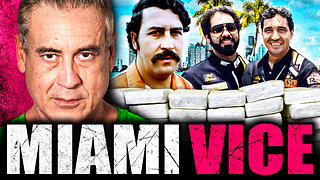 2:07:31
2:07:31
The Connect: With Johnny Mitchell
21 hours ago $23.14 earnedSecrets Of The Cocaine Cowboys: Miami Drug Lord Reveals Truth About His BILLION-DOLLAR Coke Empire
146K15 -
 21:20
21:20
AndresRestart
17 hours ago $0.64 earnedNintendo's GENIUS Mario & Zelda 40th Anniversary Plan!?
13.5K3 -
 10:35
10:35
Blackstone Griddles
17 hours agoPerfect Ribeye Every Time | Blackstone Griddles
1.13K2 -
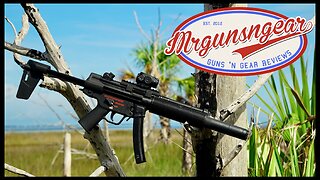 17:43
17:43
Mrgunsngear
15 hours ago $0.71 earnedMKE AP5 SD Review: The Best MP5 Clone?
2.59K5 -
 LIVE
LIVE
The Official Steve Harvey
19 days ago $12.57 earned24 HOURS OF MOTIVATION w/ STEVE HARVEY
64 watching -
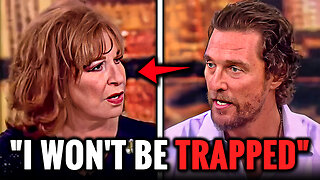 8:13
8:13
Hollywood Exposed
17 hours agoJoy Behar TRIES to Trap Matthew McConaughey and Fails Miserably
2151 -
 11:21
11:21
Red Pill MMA
22 hours agoThe Raja Jackson Situation is Embarrassing
3141 -

Boxin
4 hours agoGrounded! Part 6
8.9K -
![ASMR Mini Shopping Haul! [Five Below, Dollar Tree, Diaso]](https://1a-1791.com/video/fww1/b2/s8/1/u/3/J/c/u3Jcz.0kob-small-ASMR-Mini-Shopping-Haul-Fiv.jpg) 10:46
10:46
Lacey Mae ASMR
14 hours agoASMR Mini Shopping Haul! [Five Below, Dollar Tree, Diaso]
1411 -
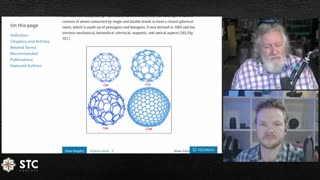 1:31:41
1:31:41
Squaring The Circle, A Randall Carlson Podcast
23 hours ago#060 The Truth About Extraterrestrial Impacts, What ‘Science’ Still Dismisses
1.73K3